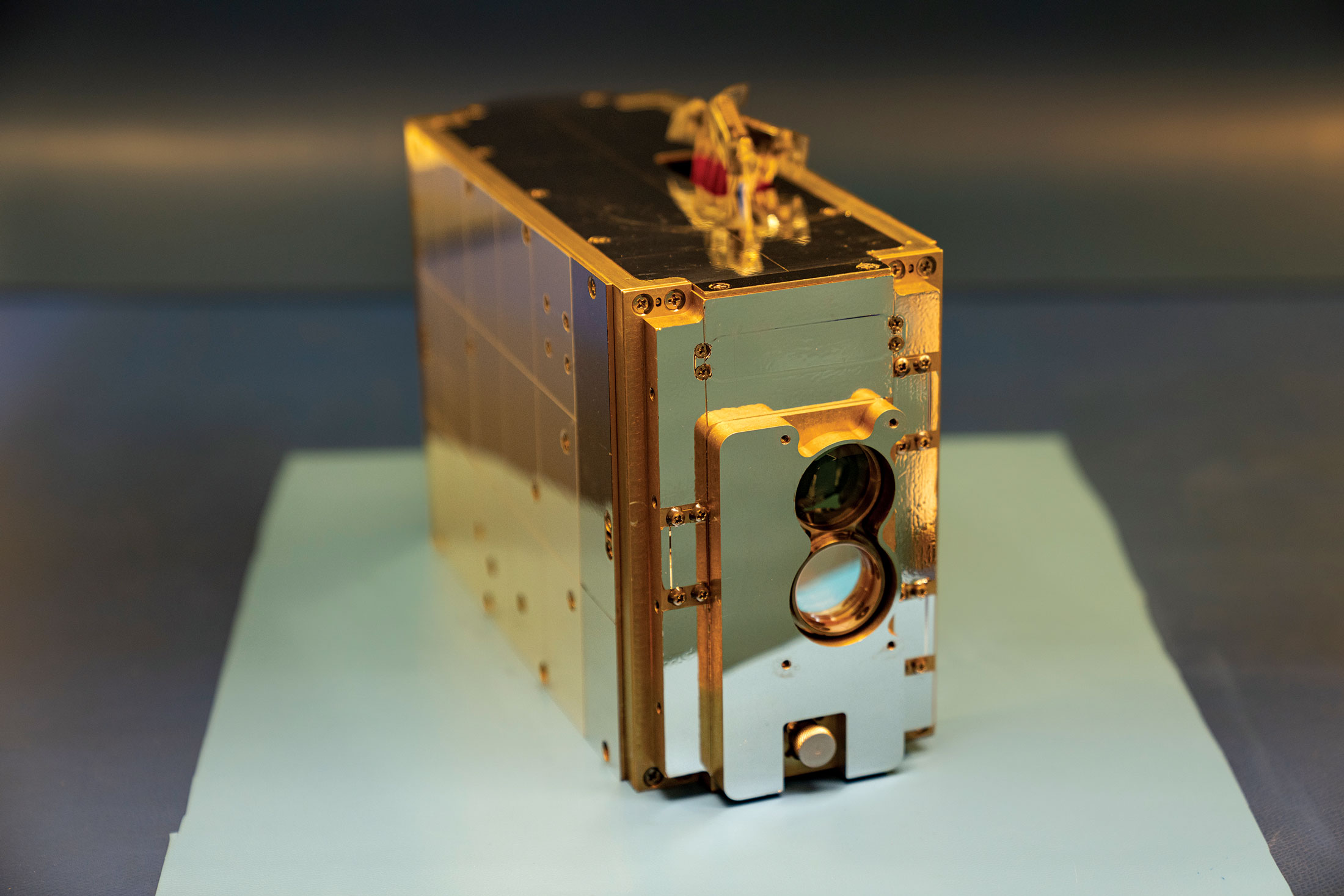TeraByte InfraRed Delivery (TBIRD)

Lincoln Laboratory in collaboration with NASA has developed optical communication technology to enable the transmittal of data from low Earth-orbiting satellites to ground stations at the revolutionary rate of 200 gigabits per second. This fast, error-free transfer of extremely high volumes of data may transform the operations and missions of scientific, commercial, and defense satellites.

Background
Accurate, efficient transmittal of the huge volume of data generated by satellites in low Earth orbit (LEO) to analysts back on Earth is a challenge. Currently, data delivery from LEO relies on onboard data compression and RF communication with networks of ground stations. As more LEO satellites are launched, the RF spectrum will be increasingly crowded and inefficient. Emerging optical communication technologies aim to solve this problem by leveraging the high bandwidths and unregulated spectrum available in the optical frequencies. However, data delivery rates even for optical systems are limited by the short, infrequent periods of contact between LEO satellites and ground terminals, resulting in an average data rate (over many contact periods) that is fairly low (~0.1–10 Mbps).
Lincoln Laboratory's Innovation
The TeraByte InfraRed Delivery (TBIRD) team developed an error-free, space-to-ground, optical-communication link by leveraging commercial off-the-shelf transceivers in tandem with TBIRD’s custom-designed Automatic Repeat reQuest (ARQ) system. The ARQ system is composed of transmit (TX) and receive (RX) subsystems, each of which consists of an addressable memory and a controller. The controllers implement the ARQ protocol, which directs the efficient, accurate transfer of data. Under laboratory test conditions, the TBIRD prototype demonstrated an unprecedented data delivery rate via an atmospheric link; the system also mitigates the constraint imposed by shortduration contact periods.
Benefits
- Can deliver data at a rate of 200 gigabits per second; can handle a volume of 10 terabytes a day per ground station
- Offers a direct LEO-to-Earth link utilizing the abundant optical spectrum
- Can be housed in a small size, weight, and power (SWaP) package that frees up satellite space for other equipment and reduces fuel usage
Additional Resources
U.S. Patents 11,522,607; 10,680,712; 10,205,521; 10,003,402; and 9,998,221
More Information
"NASA’s record-breaking laser demo completes mission," September 25, 2024
"Communications system achieves fastest laser link from space yet," November 8, 2022
C.M. Schieler et al., "Demonstration of Reliable High-Rate Optical Communication over an Atmospheric Link Using ARQ," 2019 IEEE International Conference on Space Optical Systems and Applications, 14−16 Oct. 2019.
2020 R&D 100 Award winner